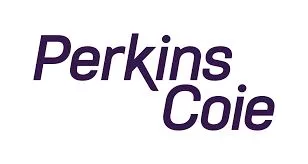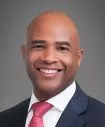- with readers working within the Retail & Leisure industries
- within Transport topic(s)
The U.S. Department of Labor's Wage and Hour Division (DOL) issued four official guidance letters ("opinion letters") on September 30, 2025.
These letters explain how federal wage-and-hour and leave laws apply in common situations. The opinion letters cover how to convert family and medical leave into hours for employees with fixed schedules and mandatory overtime, who can be included in restaurant tip pools, how to count "emergency pay" when calculating firefighter overtime, and when two related businesses count as one employer for pay purposes. Below are the key takeaways from each letter.
FMLA Leave for Correctional Law Enforcement Employees
The Family and Medical Leave Act (FMLA) gives eligible employees up to 12 workweeks of job‑protected leave each year. For hourly tracking, employers can convert those 12 workweeks into hours based on the employee's normal schedule. Voluntary overtime that an employee could work, but is not required to work, should not affect how much FMLA leave the employee has or how much gets deducted when leave is taken. If an employee's hours vary so much that a normal schedule can't be identified, employers may use a 12‑month average of past hours to estimate.
The DOL looked at correctional officers who work a fixed "Pitman" schedule with 12‑hour shifts and mandatory overtime equal to 84 hours every two weeks. The employer converted 12 workweeks of FMLA leave to 504 hours (because that reflects the required schedule) and asked whether it was correct to ignore any extra voluntary hours when calculating how much FMLA leave the employee has or uses.
The DOL concluded that employers should convert FMLA leave based on each employee's normal schedule, counting required overtime but disregarding voluntary extra hours. In practice, a fixed Pitman schedule of 84 hours every two weeks converts to 504 hours for a 12‑workweek entitlement, and leave should be charged only against hours the employee was actually scheduled to work. This approach yields accurate, consistent accounting for employees on fixed schedules with mandatory overtime.
Tip Pooling for Front-of-House Oyster Shuckers
Under the Fair Labor Standards Act (FLSA), restaurants can count part of an employee's tips toward meeting the minimum wage—this is called the "tip credit." When a restaurant uses the tip credit, only employees who routinely receive tips can be in a mandatory tip pool. One key question is whether the role involves direct customer service and interaction, not the job title. Managers and supervisors can never take a share of employee tips. If a restaurant does not use the tip credit (i.e., it pays the full cash minimum wage), the tip pool rules are broader and can include some back‑of‑house roles.
The background in this opinion letter concerned a seafood restaurant with an oyster bar in the dining area, where customers can watch front‑of‑house oyster shuckers working behind the bar. These shuckers talk with customers about oyster options and answer questions. The restaurant includes these shuckers in the servers' tip pool while taking a tip credit. Kitchen‑based shuckers have no customer contact, work only in the kitchen out of customers' view, and are not in the tip pool. The question was whether the front‑of‑house shuckers may be included in a traditional tip pool when the restaurant uses the tip credit.
The DOL answered that front‑of‑house shuckers who engage directly with guests qualify as employees who customarily and regularly receive tips and may share in a traditional tip pool when the employer takes a tip credit. By contrast, kitchen‑only shuckers without guest interaction do not qualify. The key takeaway of whether an occupation is customarily and regularly tipped turns on sufficient interaction with customers and performance of service functions, not job titles. Employees may be included in a traditional tip pool even if they do not receive tips directly from customers, but managers and supervisors may never share in tips. If no tip credit is taken, employers may operate broader, nontraditional pools that include certain back‑of‑house employees.
Firefighter Emergency Pay and the Regular Rate
The FLSA requires employers to pay most hourly employees time and a half for overtime. To do that math, an employer must first figure out the employee's "regular rate," which generally includes almost all pay the employee earns in a week. Only a few types of payments can be left out. For example, a truly discretionary bonus decided at the end of a period, or special premiums for extra hours beyond normal schedules, can sometimes be excluded. But add‑ons for working under tougher conditions (like hazard‑type premiums) usually must be included.
This opinion letter concerned a Texas city paying firefighters an extra one‑half of their base hourly rate for each hour worked during a city‑declared emergency period. Their duties are largely the same, though the conditions may be more demanding. The question was whether that extra "emergency pay" could be left out of the regular‑rate calculation for overtime or must be included.
The DOL concluded that this emergency‑period premium must be included in earnings when computing the regular rate because it is set by policy and not tied to extra hours or special days. Employers should calculate the weekly regular rate by dividing total earnings (including the emergency premium) by total hours worked, then pay an additional one‑half of that rate for each overtime hour. Payments are excludable as discretionary bonuses only if both the fact and amount are determined at the employer's sole discretion at or near the end of the period and not pursuant to any prior agreement or policy. Premiums qualifying as overtime premiums may be excluded only when paid for hours beyond or outside specified periods or for work on special days. Other premiums, such as those for hazardous, arduous, or dirty work, must be included in the regular rate.
Joint Employment: Restaurant and Members-Only Club
Two businesses can both be responsible for an employee's pay if they share control over the work. This is called "joint employment." In a common "horizontal" joint‑employment setup, the same worker is scheduled by two related businesses that coordinate with each other. Signs of joint employment include shared ownership or managers, shared facilities or operations, coordinated scheduling, swapping staff, or shared control over hiring, discipline, or payroll. When joint employment exists, the employee's hours for both businesses are added together each workweek to decide whether overtime is due, and both businesses are legally responsible for compliance.
This opinion letter question came from a hostess working at a restaurant inside a hotel who was also offered shifts at an affiliated members‑only club upstairs. The restaurant and club share a kitchen, have similar menus and trade names, use overlapping managers, sometimes clock the employee in at one place while she works at the other, and appear to have common ownership—even though they are set up as separate companies and sometimes use different timekeeping systems. The question was whether the employee's hours at both places must be combined for overtime.
The DOL determined that, on these facts, the restaurant and the club are joint employers. As a result, the employee's hours at both locations must be combined each workweek to assess minimum wage and overtime, and either entity can be held liable for any shortfall. Using separate corporate entities or timekeeping systems does not change that outcome when the operations are closely connected.
What Employers Should Do Now
- Tip Pooling (FLSA2025-03): Tip-pooling structures should be reviewed to ensure only roles that customarily and regularly receive tips through direct customer interaction are included when taking a tip credit; front-of-house shuckers may qualify, while back-of-house shuckers generally do not.
- Regular Rate Calculation (FLSA2025-04): Regular rates should be recalculated to include emergency, hazard, or similar premiums when computing overtime, and payroll policies should be audited for compliance.
- Joint Employment (FLSA2025-05): Employers should assess joint-employer risk by mapping ownership, management overlap, shared resources, scheduling coordination, and cross-location staffing and aggregate hours across entities where joint employment exists to ensure proper overtime.
- FMLA Calculations (FLMA2025-02-A): Training for managers and payroll staff should ensure leave accounting and overtime calculations align with this opinion letter. Clear, written policies on FMLA hour conversions should be maintained to support consistent compliance.
These letters are fact‑specific but provide useful guideposts. Employers should consult counsel to tailor policies and payroll practices to their operations and state and local laws.
The content of this article is intended to provide a general guide to the subject matter. Specialist advice should be sought about your specific circumstances.



